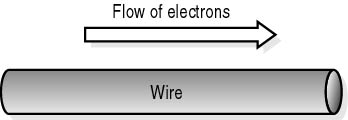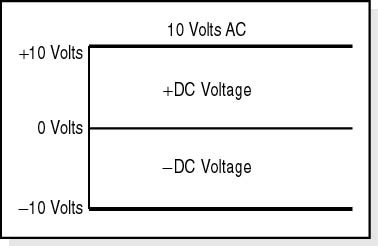As we have seen, DC is electrical energy that travels in a single direction within a circuit. (The electrical energy in a thunderstorm is another example, but not very practical in electronic applications.) DC current flows from one pole to another, hence it is said to have polarity (see Figure 13.4). The polarity indicates the direction of the flow of the current and is signified by the "+" and "-" signs (see Figure 13.5).

Figure 13.4 DC power

Figure 13.5 DC voltage
Measuring Electricity
A computer professional should know how to use a multimeter-sometimes called a VOM (Volt-Ohm Meter) or a DVOM (Digital Volt-Ohm Meter). An electrical test meter is probably the best (and most practical) tool for troubleshooting electrical problems. It is not necessary to be an "electronic technician" to use this tool effectively.